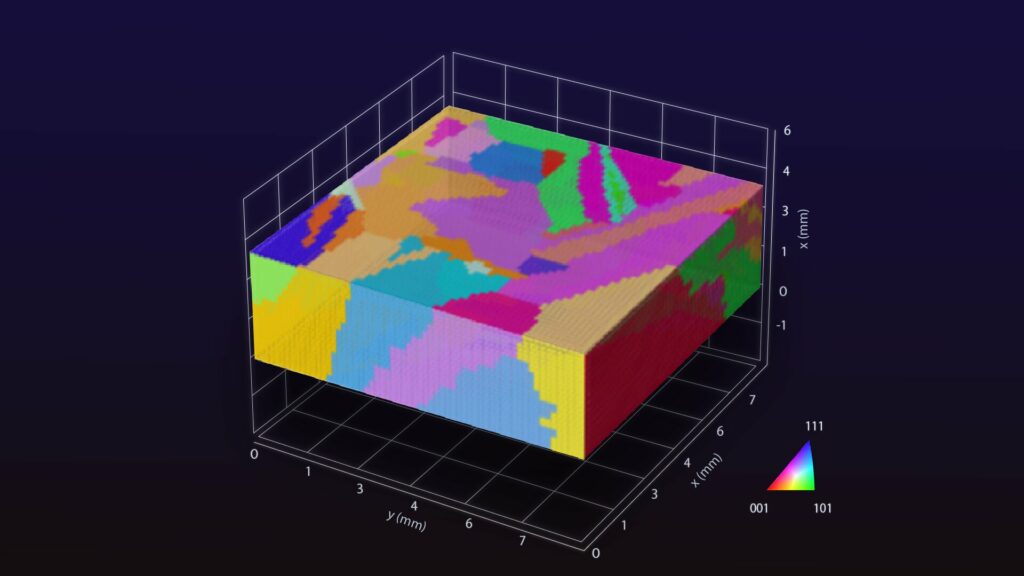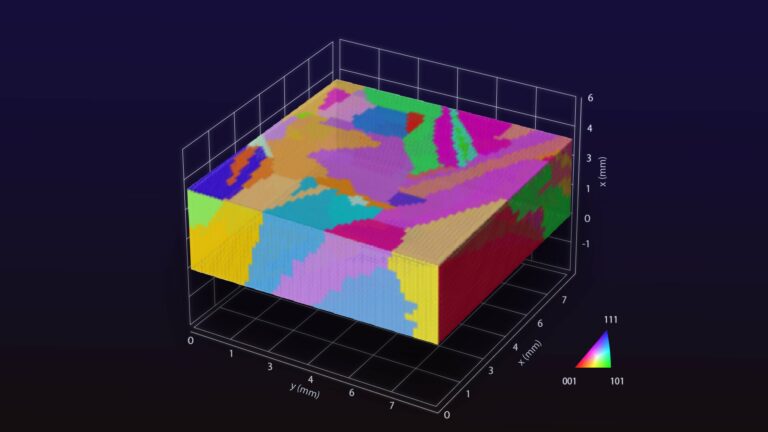Artificial Intelligence Deciphers Enigmas Surrounding Polycrystalline Materials.
Researchers at Nagoya University in Japan have harnessed the power of artificial intelligence to uncover a novel approach for comprehending small imperfections known as dislocations in polycrystalline materials. These materials are extensively employed in information equipment, solar cells, and electronic devices, where the presence of defects can diminish device efficiency.
The study detailing these findings has been published in the journal Advanced Materials. Virtually every modern device incorporates a polycrystalline element, whether it’s your smartphone, computer, or the metals and ceramics within your car. Despite their widespread use, the complexity of polycrystalline materials, stemming from intricate structures, makes their effective utilization challenging. Beyond their composition, the intricate microstructure, dislocations, and impurities significantly impact the performance of polycrystalline materials.

The industrial use of polycrystals encounters a significant challenge related to the emergence of minuscule crystal defects induced by stress and temperature fluctuations. These defects, termed dislocations, can disrupt the orderly arrangement of atoms within the lattice, adversely affecting electrical conduction and overall performance.
To enhance the reliability of devices employing polycrystalline materials, comprehending the formation of these dislocations is crucial. A research team from Nagoya University, led by Professor Noritaka Usami and featuring Lecturer Tatsuya Yokoi, Associate Professor Hiroaki Kudo, and collaborators, leveraged a novel artificial intelligence (AI) system to analyze image data of widely used solar panel material, polycrystalline silicon.
The AI generated a 3D virtual model, enabling the identification of regions where dislocation clusters influenced the material’s performance. Upon pinpointing these dislocation clusters, the researchers employed electron microscopy and theoretical calculations to decipher their formation. The study unveiled stress distribution within the crystal lattice and identified staircase-like structures at the boundaries between crystal grains, suggesting their role in dislocation occurrence during crystal growth. Professor Usami remarked, “
We discovered a distinctive nanostructure in crystals associated with dislocations in polycrystalline structures.” Beyond its practical implications, this research holds significance for the science of crystal growth and deformation. The influential Haasen-Alexander-Sumino (HAS) model, commonly used to comprehend dislocation behavior in materials, may have missed some dislocations, according to Usami. Further surprises unfolded as the researchers calculated the atomic arrangement in these structures, revealing unexpectedly large tensile bond strains along the edges of the staircase-like structures, triggering dislocation generation. Usami explained, “
As long-time experts in this field, we were astonished and thrilled to finally observe evidence of dislocations in these structures. This suggests that we can influence the formation of dislocation clusters by controlling the direction of boundary spread.” “By extracting and analyzing nanoscale regions through polycrystalline materials informatics, combining experimentation, theory, and AI, we have achieved a groundbreaking elucidation of phenomena in complex polycrystalline materials,” continued Usami. “This research paves the way for establishing universal guidelines for high-performance materials and is anticipated to contribute to the development of innovative polycrystalline materials. The potential impact extends beyond solar cells to various applications, including ceramics and semiconductors. Given the widespread use of polycrystalline materials in society, enhancing their performance holds the potential to revolutionize societal applications.”
This article is republished from PhysORG under a Creative Commons license. Read the original article.
Do not forget to share your opinion with us to provide you with the best posts !




0 Comments